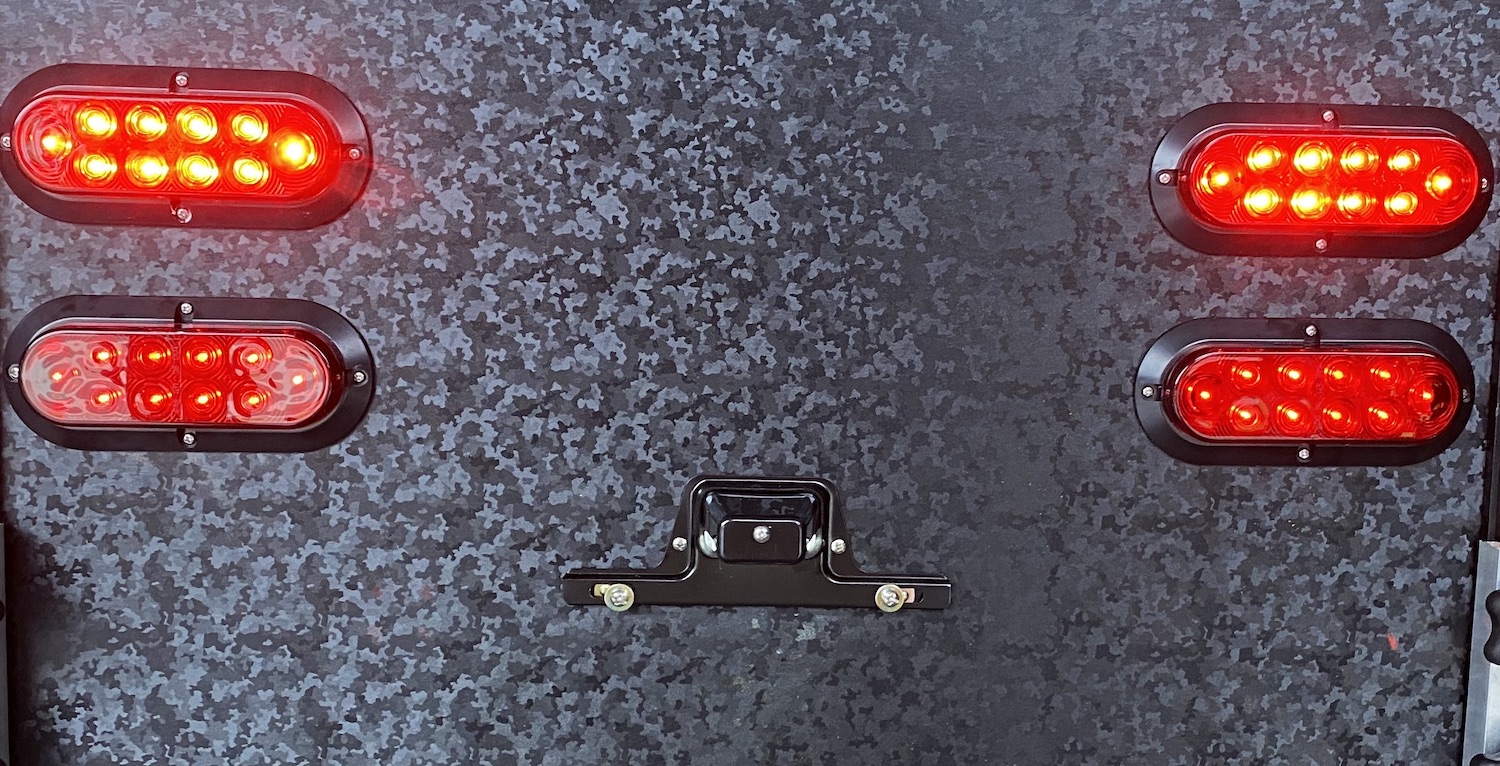Trailer lighting

Trailer lighting is a topic that raises more questions than almost any other aspect of operating a motorcycle camper. Over the years, I’ve done many videos on the tow vehicle side of this question, i.e. motorcycle trailer wiring. In this post, I’m going to discuss it from the trailer side.
To be legal in the US, your trailer lighting has to perform four functions. It has to display left and right turn indicators. It has to have a tag light and low intensity always on “running lights.” And it has to display your tow vehicle’s brake signal.
It should be simple, but it’s not
Honestly, I wish there was just one way to accomplish trailer lighting, but there are many. And to top it off, different vehicles are set up to display their own lights in different ways. The biggest difference is in how the brake lights are presented. On some vehicles and trailers, the brake lights are combined with the turn signals. On others, the brake lights operate on a separate set of lights (or a separate set of filaments within a bulb housing).
Rather than discuss all these variations, what I want to present is a trailer lighting scheme that can be used in either case, without modification. If your tow vehicle has combined brake and turns, this will work. If it has separate brake and turns, this will work. All you need to do is make the physical connection between the two. If you change vehicles and it handles its signals differently, this will still work.
Universal trailer wiring diagram
Here’s a trailer wiring solution that will work on any vehicle. There are two important requirements for this to work. First, use lights with all red lenses. Turn signals must have red lenses to legally function as brake lights. Second, use only lights that have both high and low intensities. This is common in LED lights and specifically in the commonly used 6 inch oval LED trailer lights.

Here is a wiring setup with four LED lights, all red lenses, and with the ability to shine at low and high intensity. In this setup, the running light circuit is connected to the low intensity wire on all four lights. The left turn connects to the high intensity circuit on the lower left light. The right turn connects to the high intensity circuit on the lower right light. The brake signal is wired to the high intensity circuit on BOTH lights on the top. With a common ground wire running to the ground on all lights, this comprises a 5 wire system.
Same wiring, different plug
Let’s say you want to connect this to a car or truck or any tow vehicle that has a flat four output plug. On these vehicles, the brake signal is added to the turn signal circuits. A separate brake circuit is not supported. This does not change how anything is wired on the camper, except the plug that you need to make the physical connection to the tow vehicle. In this setup, you use a “flat 4” plug, connecting to the ground, left turn, right turn and running light circuits on the camper. The separate brake circuit wire is not used. This is a 4 wire system.

As you can see, there’s no difference in how the trailer is wired from one to the other. The only difference is the plug that’s being used and the way the circuits are being used by the tow vehicle. In fact, you don’t even need to change the plug. You could build an adaptor to connect the two. But that’s a topic for another post some time.
Questions?
For more information about this camper you can contact me through this page.
My business is selling motorcycle campers and trailers and the gear you need to tow them with a motorcycle or trike. I run two sites: Open Road Outfitters and US Hitch.